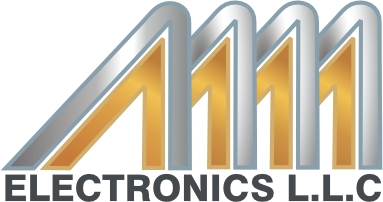Ultrasonic Thickness Gauge
Sort by
Brands
Filter by price
Extech TKG150 Ult Thickness Gauge/Datalogger
In stock
Extech TKG100 DGT Ultrasonic Thickness Gauge
In stock
PCE-TG 300-P5EE Ultrasonic Thickness Gauge Thru coating
In stock
No subcategories found.
Ultrasonic thickness gauges are powerful tools that play a vital role in various industries including manufacturing, construction, and maintenance. These handheld devices use ultrasonic waves to measure the thickness of solid materials non-destructively. They provide accurate measurements and are widely used for quality control, safety testing, and asset management. This article will delve into the working principles, features, and applications of ultrasonic thickness gauges, highlighting their importance in modern industries.
How Ultrasonic Thickness Gauges Work
Ultrasonic thickness gauges work on the principle of sound waves and their transmission through different materials. The device consists of a transducer that emits ultrasonic pulses toward the surface of the material being tested. When sound waves meet the boundary between materials or the back surface of the sample, they are partially reflected back to the transducer. The device measures the time it takes for sound waves to travel to and from the surface, calculating the thicknesses of the material based on the speed of sound and time of flight.
Key Features of Ultrasonic Thickness Gauges
Non-Destructive Testing: One of the most important advantages of ultrasonic thickness gauges is their non-destructive testing capabilities. They can measure material thickness without damage, allowing an accurate assessment of structural integrity and material degradation.
High Accuracy: Ultrasonic thickness gauges provide high accuracy in measurements, often in the micrometer or millimeter range. This makes them ideal for applications that require accurate thickness assessment, such as monitoring for corrosion in pipes or assessing coating thickness.
Portability and ease of use: These meters are typically compact hand-held devices that can be easily operated by a single user. They typically have an intuitive interface and provide real-time readings, making them convenient for on-site testing and fieldwork.
Multiple measuring modes: Ultrasonic thickness gauges typically offer different measurement modes to suit different materials and situations. These modes can include pulse-echo, echo-echo, and dual modes, allowing measurements on coated surfaces, through coats of paint, or in severely rough surface conditions.
Applications of Ultrasonic Thickness Gauges
- Industrial Manufacturing
- Oil and Gas Industry
- Shipbuilding and Maritime
- Construction and Infrastructure
Types of Materials
- Metals
- Plastics
- Glass
Top Ultrasonic Thickness Gauges in the Market
Olympus Ultrasonic Thickness Gauge
The Olympus ultrasonic thickness gauge is a renowned model known for its accuracy and versatility. It is widely used for measuring thickness in metals, plastics, and other materials, making it a valuable tool in diverse industries.
Mitutoyo Ultrasonic Thickness Gauge
Mitutoyo’s ultrasonic thickness gauges are characterized by their precision and reliability. They provide a wide range of measurement options and are often favored for their durability.
Dakota Ultrasonic Thickness Gauge
Dakota ultrasonic thickness gauges are known for their ruggedness and ability to withstand harsh environments. They are particularly popular in industries such as oil and gas, where durability is a crucial factor.
Fluke Ultrasonic Thickness Gauge
Fluke‘s ultrasonic thickness gauges are highly regarded for their accuracy and intuitive user interfaces. They offer a range of models tailored to different applications and materials.
MME-AE is an importer and supplier of Ultrasonic Thickness Gauges in the UAE and other countries. if I want to mention the number of Thickness Gauges:
Comparing Olympus 38DL Plus and DM5E Ultrasonic Thickness Gauges
The Olympus 38DL Plus and DM5E are two popular models that cater to different needs. The 38DL Plus offers advanced features and a wide range of applications, while the DM5E focuses on simplicity and essential measurements.
Ultrasonic Thickness Gauges in the Pipeline Industry
In the pipeline industry, ultrasonic thickness gauges play a crucial role in monitoring pipe wall thickness and detecting corrosion or erosion. Regular inspections using these gauges help maintain the integrity of pipelines and prevent potential leaks or failures.
Choosing the Right Ultrasonic Thickness Gauge for Your Needs
Selecting the appropriate ultrasonic thickness gauge involves evaluating factors like material type, measurement range, environmental conditions, and intended usage. Conducting a thorough assessment ensures you acquire a gauge that meets your specific requirements.
Frequently Asked Questions (FAQs)
- Are ultrasonic thickness gauges suitable for measuring non-metallic materials?Yes, ultrasonic thickness gauges can measure a wide range of materials, including plastics, ceramics, and composites.
- Can ultrasonic thickness gauges be used underwater?Some models are designed for underwater use, but it’s important to ensure the gauge’s specifications match the intended application.
- What are the benefits of using a portable ultrasonic thickness gauge?Portable gauges offer convenience and flexibility, allowing measurements to be taken in various locations.
- Do ultrasonic thickness gauges require special training to operate?While the basic operation is straightforward, proper training ensures accurate measurements and optimal gauge usage.
- How often should ultrasonic thickness gauges be calibrated?Calibration frequency depends on usage and industry standards, but annual calibration is a common practice.
In conclusion, ultrasonic thickness gauges have become indispensable tools across industries, contributing to quality assurance, safety, and efficiency. By understanding their features, applications, and advancements, professionals can make informed decisions when selecting and utilizing these valuable instruments.

